Posted on 04/15/2024 16:30 PM (CNA Daily News)
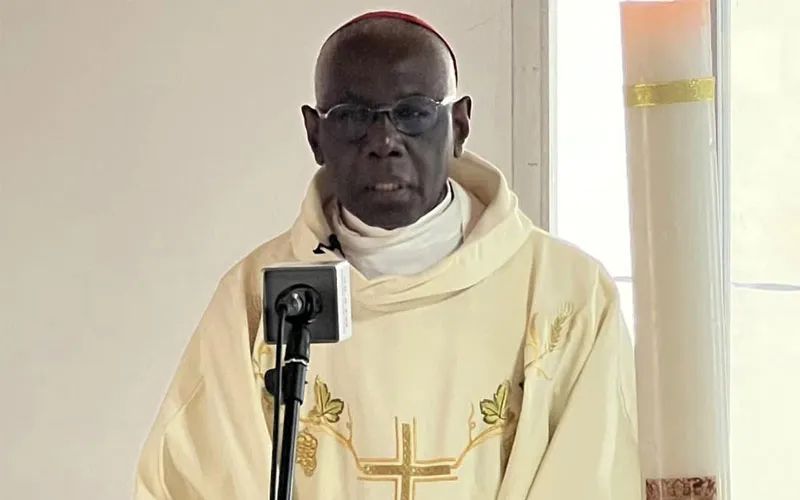 Cardinal Robert Sarah addresses members of the National Episcopal Conference of Cameroon (NECC) on April 9, 2024. / Credit: NECC
Cardinal Robert Sarah addresses members of the National Episcopal Conference of Cameroon (NECC) on April 9, 2024. / Credit: NECC
ACI Africa, Apr 15, 2024 / 13:30 pm (CNA).
A subset of Church leaders have aligned themselves with modern-day values in the name of a “contemporary culture” that is akin to paganism, Cardinal Robert Sarah said in an address in Cameroon last week.
Sarah, who was addressing members of the National Episcopal Conference of Cameroon (NECC) on April 9, said the Church was experiencing what he described as “practical atheism.”
“Many Western prelates are tetanized [paralyzed] by the idea of opposing the world. They dream of being loved by the world; they’ve lost the desire to be a sign of contradiction,” the Guinean-born cardinal lamented during his address to NECC members on the second day of their 49th Plenary Assembly at the headquarters of NECC in Mvolyé in the Archdiocese of Yaoundé.
“I believe that the Church of our time is experiencing the temptation of atheism,” he said. “Not intellectual atheism, but that subtle and dangerous state of mind: fluid and practical atheism. The latter is a dangerous disease, even if its initial symptoms seem benign.”
“We need to be aware of it; this fluid atheism runs through the veins of contemporary culture. It never says its name but infiltrates everything, even ecclesiastical discourse. Its first effect is a kind of lethargy of faith. It anesthetizes our ability to react, to recognize error and danger; it has spread throughout the Church,” he said.
In essence, the fluid and practical atheism, Sarah said, seeks “a compromise between truth and lies. This is the major temptation of our time.”
The cardinal, who until his retirement in February 2021 was serving as prefect of the Vatican Congregation (now Dicastery) for Divine Worship and the Discipline of the Sacraments, said he found it regrettable that Church leaders have given room to the vice of "fluid and practical atheism."
“We are all guilty of accommodating, of complicity with this major lie that is fluid and practical atheism,” he said. “We pretend to be Christian believers and men of faith; we celebrate religious rites, but in fact we live as pagans and unbelievers.”
According to Sarah, “fluid and practical atheism is elusive and slimy. If you attack it, it will entangle you in its subtle compromises. It’s like a spider’s web — the more you struggle against it, the tighter it gets on you. Fluid and practical atheism is the ultimate trap of the tempter of Satan.”
He decried “dissension and suspicion,” saying that these vices are “everywhere” in the Church. “Fluid and practical atheism lives and feeds on all our little weaknesses, all our capitulations, and compromises with its lie.”
“We don’t have to create parties in the Church; we don’t have to proclaim ourselves the saviors of this or that institution. All that would contribute to the adversary’s game. But each of us can decide today: The lie of atheism will no longer pass through me; I no longer wish to renounce the light of faith; I no longer wish, out of convenience, laziness, or conformism, to allow light and darkness to cohabit within me,” he said.
The 78-year-old cardinal continued, referring to the decision to embrace the light of faith: “If everyone humbly decided to do so, the system of lies would collapse of its own accord, because its only strength is the place we give it within ourselves.”
“To keep the spirit of faith is to renounce all that compromises it, to refuse to see things in any other way than through faith. It means keeping our hand in God’s hand. I deeply believe that this is the only possible source of peace and gentleness,” the cardinal said.
“Keeping our hand in God’s hand is the guarantee of true benevolence without complicity, true gentleness without cowardice, true strength without violence,” he continued.
Sarah went on to decry “bitterness and partisanship” that he said have “infested” the Church.
“Only the spirit of faith can form the basis of genuine fraternal benevolence. The world is dying, eaten away by lies and rivalry. Only the spirit of faith can bring it peace,” Sarah said.
On April 4, Sarah called upon the lay faithful of Cameroon’s Diocese of Obala to prioritize prayer in their daily tasks.
The following day, on April 5, he presided over the priestly ordination of 12 men, whom he urged to live their vocation to priesthood “attentive to the flock.”
Sarah also urged Catholic bishops in Africa to be keen on defending the Catholic faith, voicing their opposition to defenders of “particular cultures” during the October session of the ongoing Synod on Synodality.
This story was first published by ACI Africa, CNA’s news partner in Africa, and has been adapted by CNA.
Posted on 04/15/2024 15:30 PM (CNA Daily News)
 Baltimore workers and relatives attend a press conference to honor families and victims of the March 26 collapse of the Francis Scott Key Bridge after it was struck by the container ship Dali, in Baltimore, Maryland, on March 29, 2024. / Credit: MANDEL NGAN/AFP via Getty Images
Baltimore workers and relatives attend a press conference to honor families and victims of the March 26 collapse of the Francis Scott Key Bridge after it was struck by the container ship Dali, in Baltimore, Maryland, on March 29, 2024. / Credit: MANDEL NGAN/AFP via Getty Images
CNA Staff, Apr 15, 2024 / 12:30 pm (CNA).
The Knights of Columbus recently pledged a six-figure donation toward a Church-sponsored relief fund for families of workers killed in the collapse of Baltimore’s Francis Scott Key Bridge.
The fraternal organization said on its website that its board of directors “voted during a recent meeting to contribute $100,000 to a relief fund run by the Archdiocese of Baltimore for families who lost loved ones and livelihoods” in the collapse of that bridge.
The bridge, which first opened in 1977, was largely destroyed last month after a container ship struck it in the early morning hours of March 26. Six construction workers lost their lives in the collapse, while several other individuals were injured.
Supreme Knight Patrick Kelly noted in the announcement that the founder of the Knights, Blessed Michael McGivney, created the organization in 1882 “to support widows and orphans.”
“So it was only natural that, upon learning of the death of six road workers — husbands and fathers from the Catholic Hispanic community — we were moved to join with the Church in Baltimore in providing aid to their widows and orphans,” Kelly said.
The Catholic Review, the newspaper of the Archdiocese of Baltimore, said that the relief fund — which was established by the archdiocese and is being administered at the parish level — has received about $70,000 in addition to the Knights’ donation. Another related fund has received $25,000 in donations.
The deceased bridge workers, who hailed from Mexico, El Salvador, Honduras, and Guatemala, had been filling potholes on the bridge at the time of the disaster.
Last week the Sacred Heart of Jesus-Sagrado Corazón de Jesús Parish in the city’s Highlandtown neighborhood hosted a large prayer service in honor of the deceased workers, the Catholic Review reported.
Archbishop William Lori told the newspaper that the local Church has demonstrated a “beautiful” display of both material and spiritual help to the families of the deceased workers.
“It’s the accompaniment because these wives and moms and children have lost their husbands and fathers in the most tragic way, and we just have to surround them with love,” Lori said.
Posted on 04/15/2024 14:32 PM (CNA Daily News)
 Cardinal Louis Raphael Sako (second from left), patriarch of the Chaldean Church, returned to Baghdad, the capital of Iraq, after being absent from his patriarchal seat since July 2023. Along with Bishop Thomas Mirm (right), the patriarch made his way to the Patriarchal Palace, where Bishops Shlimon Warduni (not pictured) and Basilios Yaldo (left) welcomed him, joined by priests from Baghdad's archdiocese. / Credit: Courtesy of Chaldean Patriarchate
Cardinal Louis Raphael Sako (second from left), patriarch of the Chaldean Church, returned to Baghdad, the capital of Iraq, after being absent from his patriarchal seat since July 2023. Along with Bishop Thomas Mirm (right), the patriarch made his way to the Patriarchal Palace, where Bishops Shlimon Warduni (not pictured) and Basilios Yaldo (left) welcomed him, joined by priests from Baghdad's archdiocese. / Credit: Courtesy of Chaldean Patriarchate
Baghdad, Iraq, Apr 15, 2024 / 11:32 am (CNA).
Cardinal Louis Raphael Sako, patriarch of the Chaldean Church, has returned to Baghdad, the capital of Iraq, after being absent from his patriarchal seat since last July. He had decided to retreat from the city and stay at the priestly patriarchal monastery in the Kurdistan region after a government decision affecting the church.
Sako’s visit to Baghdad April 10–13 came “upon a personal invitation from the Iraqi prime minister,” Mohammed Shia’ Al Sudani, according to the Chaldean Patriarchate’s official website.
Al Sudani mandated a representative to welcome Sako at the Hall of Honors in Baghdad International Airport.
Along with Bishop Thomas Mirm, the patriarch made his way to the Patriarchal Palace, where Bishops Shlimon Warduni and Basilios Yaldo welcomed him, joined by priests from Baghdad’s diocese.
On Thursday morning, Al Sudani met with Sako and his delegation to discuss Iraq’s overall situation, especially matters pertaining to “stability in the country,” the prime minister’s website stated.
Al Sudani said he welcomed the patriarch’s revival of his presence and influential role in Baghdad. He affirmed his government’s commitment to fostering coexistence, fraternity, and true citizenship across all segments of Iraqi society. Iraq’s premier also underscored the nation’s strength in diversity, highlighting Iraqi Christians’ historic contributions to building and reinforcing the state.
In his own remarks, Sako stressed the importance of the government taking greater action to fulfill its duties toward the Iraqi people. He emphasized the need to improve the lives of citizens and meet all their demands and requirements as well as to follow up on minority issues and ensure their rights.
The Chaldean Patriarchate invited the faithful to participate in a Divine Liturgy presided over by the patriarch on April 12 at St. Joseph Cathedral in Baghdad. The Mass was held to give thanks to God, “who has granted us relief after hardship and has gladdened our hearts with the return of our shepherd and head of our church.”
Khaled Jamal Albert, director general of Christian affairs at the Ministry of Endowments and Religious Affairs in the Kurdistan region, commented to Rudaw Media Network that Sako’s relocation — either permanently back to Baghdad or moving his seat to Erbil — would be preferable to his continued absence from the patriarchal headquarters.
The events that led to Sako’s departure were sparked in July 2023 when Iraq’s President Abdul Latif Rashid withdrew the decree appointing the cleric as patriarch of the Chaldean Church worldwide, also revoking control of church endowments. During that time, the patriarchate described the decision as “unprecedented in Iraqi history.”
Sako had previously affirmed during a press conference he held at the Patriarchal Palace in Baghdad in July of last year that the church does not interfere in political life. He described the Iraqi government’s silence on some of the unjustified abuses and attacks against Christians as suspicious. He pointed out that the patriarchate would be forced to take appropriate legal action and resort to international forums if silence persisted.
This article was first published by ACI MENA, CNA's Arabic-language news partner. It has been translated and adapted by CNA.
Posted on 04/15/2024 10:30 AM (CNA Daily News)
 City skyline in Sydney, Australia. / Irina Sokolovskaya/Shutterstock
City skyline in Sydney, Australia. / Irina Sokolovskaya/Shutterstock
CNA Newsroom, Apr 15, 2024 / 07:30 am (CNA).
Australian police have confirmed another stabbing incident in Sydney after shocking video footage of a man apparently attacking a church leader went viral on social media on Monday.
In a first statement, New South Wales police urged the community to avoid the area, saying several people were stabbed in the Monday incident, suffering “non-life-threatening injuries.” The alleged attacker appears to have been apprehended. Police said they “arrested a male and he is assisting police with inquiries.”
NSW Ambulance paramedics reportedly treated the injured at the scene.
The victim in the video was identified to CNA by persons familiar with the community as Bishop Mar Mari Emanuel, a former member of the Ancient Church of the East and current leader of the Sydney-area Christ the Good Shepherd Church.
While exact circumstances of the stabbing are yet to be confirmed, the attack occurred just after 7 p.m. local time, during which the community attends Bible classes, according to the church’s website.
The attack is the second stabbing incident in Sydney within two days. Six people died in a knife attack on Saturday at a mall in the Bondi area.
Rody Sher contributed to this report.
This is a developing story.
Posted on 04/15/2024 09:00 AM (CNA Daily News)
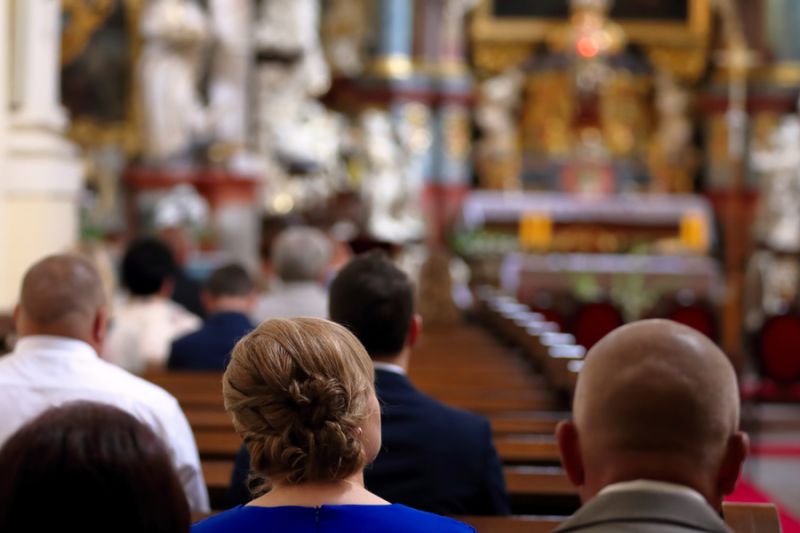 null / Credit: Shutterstock
null / Credit: Shutterstock
CNA Staff, Apr 15, 2024 / 06:00 am (CNA).
The Pew Research Center released a new fact sheet Friday that contains nine demographic and statistical facts about the Catholic population in the United States, based on the center’s numerous surveys.
Here are Pew’s nine facts about Catholics in the United States.
Twenty percent of American adults identify as Catholics — a stable number for the past 10 years.
Out of 262 million adults in the U.S., about 52 million would say they’re Catholic, Pew reports. In 2007, 24% of U.S. adults said they were Catholic.
A third of all U.S. Catholics are Hispanic.
The Catholic population is 57% white, 33% Hispanic, 4% Asian, and 2% Black, while 3% are of another race, Pew reported.
Catholics tend to be older than Americans overall, but Hispanic Catholics trend younger.
While more than half of U.S. Catholic adults overall are aged 50 or older, Hispanic Catholics break that mold. Fewer than half of Hispanic Catholics (43%) are 50 and older, and just 14% of Hispanic Catholics are ages 65 and older, versus 38% of white Catholics.
Roughly 3 in 10 U.S. Catholics (29%) live in the South, while 26% live in the Northeast, 24% in the West and 21% in the Midwest.
Data cited by Pew, and other data previously covered by CNA, show that Catholicism is growing fastest in the South and West, even as it declines in the Midwest and the historically Catholic Northeast.
The racial and ethnic profile of the Catholic population varies considerably by region, Pew notes. For example, in the Midwest, 80% of Catholics are white and 17% are Hispanic. In the Northeast, 72% of Catholics are white and 19% are Hispanic.
In the South, 49% are white and 40% are Hispanic. And in the West, there are more Hispanic Catholics than white Catholics (55% vs. 30%), Pew says.
About a third of U.S. Catholics (32%) have a bachelor’s degree.
Another 28% have some college experience but not a bachelor’s degree, and 40% have a high school education or less — a distribution similar to that of the general adult population.
Just 3 in 10 U.S. Catholics (28%) say they attend Mass weekly or more often.
Pew compared this figure with the share of Protestants who attend weekly services, which they say is 40%.
Larger shares of Catholics say they pray daily (52%) and say religion is very important in their life (46%), Pew says. Overall, 20% of U.S. Catholics say they attend Mass weekly and pray daily and consider religion very important in their life.
By contrast, 10% of self-identified Catholics say they attend Mass a few times a year or less often, pray seldom or never, and consider religion “not too” or “not at all” important in their life.
About half of Catholic registered voters (52%) identify with or lean toward the Republican Party, while 44% affiliate with the Democratic Party.
Other data has shown that the “Catholic electorate” is fairly evenly divided between the Republican and Democratic parties, while also suggesting that a substantial number of Catholics don’t identify with a party at all.
About 6 in 10 U.S. Catholics say abortion should be legal, in contrast to the Church’s teaching.
This includes 39% who say it should be legal in most cases and 22% who say it should be legal in all cases, Pew says.
A key factor, Pew says, is that Catholics’ opinions about abortion tend to align more with their political leanings than with the teachings of their Church. Among Catholic Democrats, 78% say abortion should be legal in most or all cases. Among Catholic Republicans, 43% say this.
Three-quarters of Catholics in the U.S. view Pope Francis favorably, though that figure has dipped by 8% since 2021.
Francis’ approval rating among U.S. Catholics reached 90% in Pew’s 2015 survey. By September 2018 — at a time when the entire Church was reeling from fresh scandals related to sexual abuse — the pope’s approval rating stood at just 72%, the lowest of his papacy. It had ticked back up to 83% three years later, before its latest dip to 75% in February of this year.
Pope Francis’ late predecessor Benedict XVI initially had a low approval rating of 67% among U.S. Catholics upon taking office in 2005. By 2008, however, his approval rating had reached 83%, and he closed out his papacy at 74%, in 2013.
Neither Benedict nor Francis has yet achieved the lofty heights set by the saintly Pope John Paul II, who in 1990 and 1996 garnered approval from 93% of U.S. Catholics, according to Pew’s data.
Posted on 04/14/2024 13:56 PM (CNA Daily News)
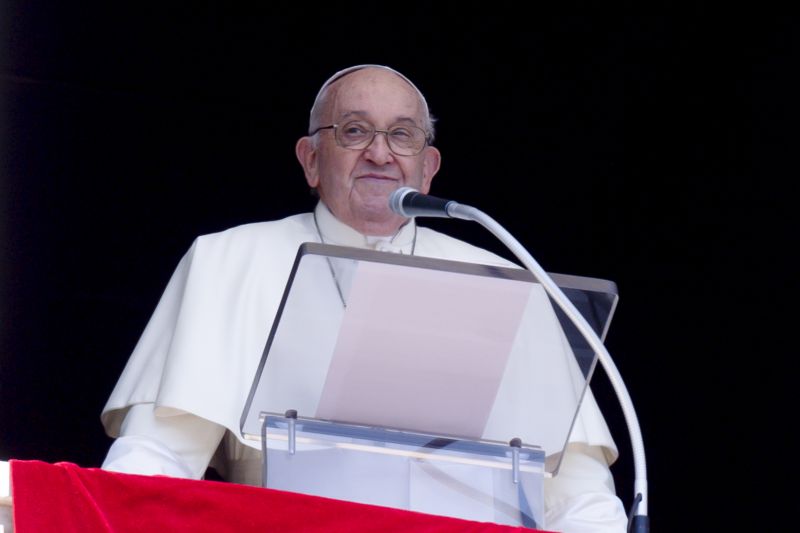 Pope Francis addresses pilgrims gathered in St. Peter’s Square at the Vatican after the recitation of the Regina Caeli prayer on April 14, 2024. / Credit: Vatican Media
Pope Francis addresses pilgrims gathered in St. Peter’s Square at the Vatican after the recitation of the Regina Caeli prayer on April 14, 2024. / Credit: Vatican Media
Rome Newsroom, Apr 14, 2024 / 10:56 am (CNA).
Pope Francis expressed his concern over escalating tensions in the Middle East following Iran’s missile attack Saturday against Israel, a concern he raised after imploring Christians to share their stories of encountering Christ, which he said would create a richer and more beautiful environment for all.
“I follow in prayer and with concern, even pain, the news that has arrived in the last few hours on the worsening of the situation in Israel due to the intervention by Iran,” the pope said to all those gathered before him in St. Peter’s Square on April 14.
“I make a heartfelt appeal to stop any action that could fuel a spiral of violence with the risk of dragging the Middle East into an even greater conflict of war. No one should threaten the existence of others,” he added.
On Saturday evening Iran launched over 300 drones and missiles on military targets in Israel in retaliation for an Israeli attack on the Iranian Embassy in Syria’s capital Damascus on April 1, which killed seven.
Pope Francis also renewed his exhortation for peace as the Israel-Hamas war continues unabated, calling for “the Israelis and Palestinians to live in two states, side by side, in security, it is their deep and legitimate desire, and it is their right.”
Before the recitation of the Regina Caeli, the pope also exhorted Christians to share their personal encounters with Christ, noting that it is “the most beautiful thing we have to tell.”
The pope made this reflection against the backdrop of today’s reading from the Gospel of Luke, where two disciples, returning from Emmaus, meet with the apostles in the upper room and recount their encounter with Christ.
“Jesus arrives precisely while they are sharing the story of the encounter with him,” a message, the pope observed, that for us today underscores “the importance of sharing the faith.”

The pope observed that today, this message is often drowned out by the frenzy of messages, which are often “superficial” and “useless,” and which often reveal “an indiscreet curiosity or, worse still, arise from gossip and malice.”
“They are news that have no purpose, on the contrary, they do harm,” the pope continued.
Amid the deluge of counterproductive messages, Pope Francis called on Christians to share their personal testimonies of encountering Christ, “not by being a lecturer to others, but by sharing the unique moments in which we perceived the Lord alive and close.”
While acknowledging that it can often be a “struggle” to discuss these encounters with family, friends, and the broader community, the pope advocated persistence in doing so as it will make our personal “encounters” and social environments “even more beautiful.”
In closing his address, the pope called upon all Christians to conduct a series of interior examinations, asking ourselves: “Have I ever spoken about it with someone? Have I ever simply made a gift of it to family members, colleagues, loved ones, and those I associate with? And finally: Am I, in turn, interested in listening to what others have to tell me about their encounter with Christ?”
Posted on 04/14/2024 11:00 AM (CNA Daily News)
 Seminarians chat as they walk along the promenade in front of Sacred Heart Major Seminary in Detroit. Starting in the fall semester of 2024, first-year seminarians at Sacred Heart and seminaries across the country will undertake a "propaedeutic" year focused on personal, spiritual, and relationship growth, limiting the use of technology while spending more time in prayer and communion with others. / Credit: Photos by Marek Dziekonski | Special to Detroit Catholic
Seminarians chat as they walk along the promenade in front of Sacred Heart Major Seminary in Detroit. Starting in the fall semester of 2024, first-year seminarians at Sacred Heart and seminaries across the country will undertake a "propaedeutic" year focused on personal, spiritual, and relationship growth, limiting the use of technology while spending more time in prayer and communion with others. / Credit: Photos by Marek Dziekonski | Special to Detroit Catholic
Detroit, Mich., Apr 14, 2024 / 08:00 am (CNA).
Starting in the fall, seminarians at Sacred Heart Major Seminary in Detroit are going to have more prayer time and less screen time.
The sixth edition of the U.S. Conference of Catholic Bishops’ Program of Priestly Formation, or PPF, which began to be implemented last year in seminaries across the country, mandates a “propaedeutic” (pro-pih-DOO-tic) year for all men first entering into seminary.
Following this guidance, Sacred Heart Major Seminary in Detroit will implement a year of preparation for first-year seminarians starting in the fall of 2024, when men discerning the priesthood will focus on personal and spiritual growth, and less on academic work.
A key feature of the propaedeutic year — “propaedeutic” meaning preparatory or preliminary — will be limited screen and device time and more time dedicated to forming a sense of collegiality among seminarians, helping them to develop a spiritual life rooted in prayer as they discern the vocation to which God is calling them, said Father Stephen Pullis, director of graduate pastoral formation at Sacred Heart Major Seminary, who will lead the propaedeutic year program at the seminary.
“We started it in a small phase this year for those who came out of high school, but for next year, it will go into effect for all new seminarians,” Pullis told Detroit Catholic. “It’s a new year at the beginning that focuses more on human and spiritual formation. It has fewer classes, a different rhythm of life to help them adjust to growing in their human formation and growing spiritually as well.”
The first year of seminary formation will be about becoming accustomed to seminary life, forming good prayer habits and growing in virtue and friendship with fellow seminarians and with God, Pullis said. To achieve this, seminarians will be asked to limit the time they spend with technology, including smartphone usage, to be more present in their surroundings.
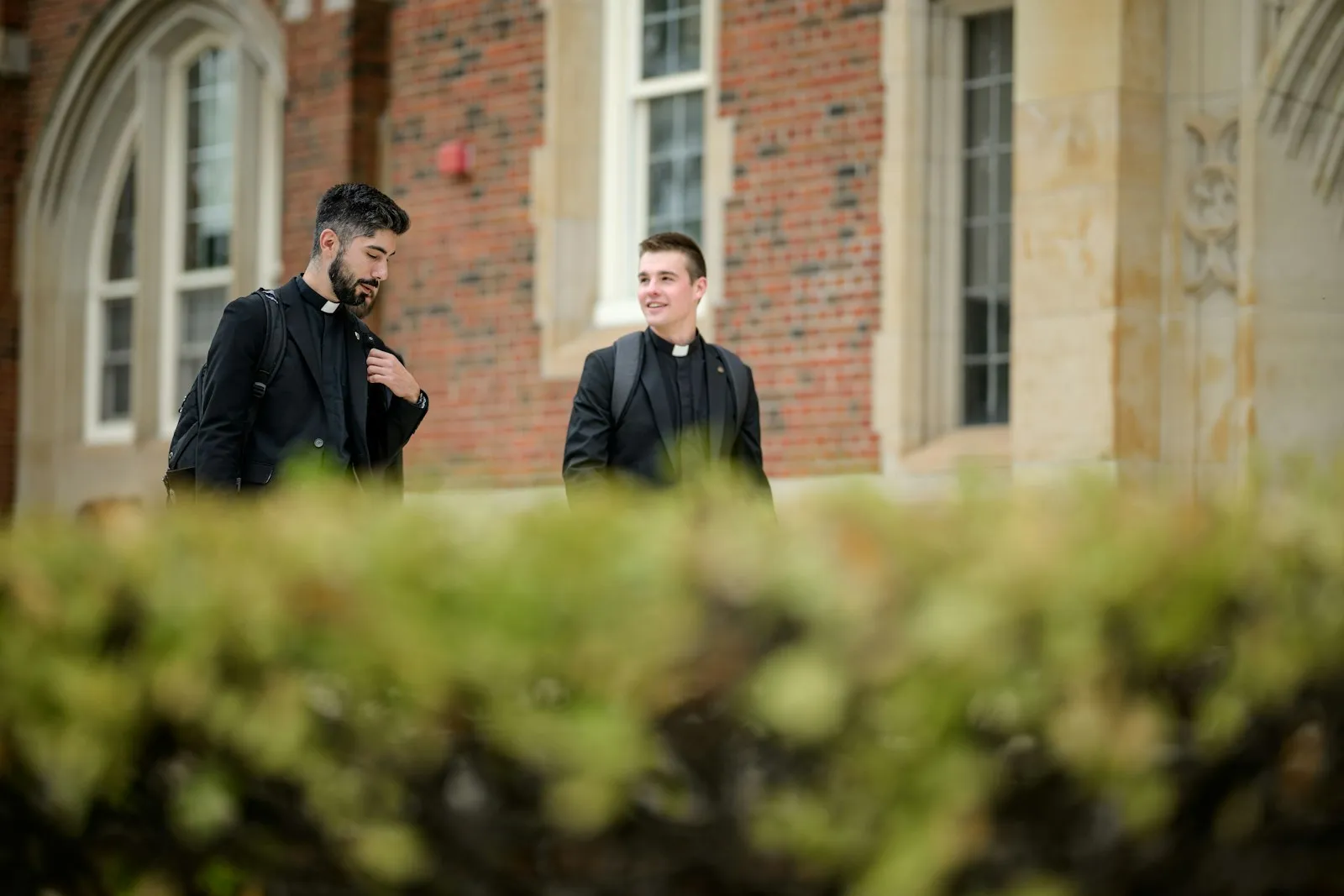
The change of schedule comes after recommendations from the Holy See on what seminarian formation needs to encompass to form priests centered in prayer, Pullis said.
“One of the challenges men coming into the seminary often have is they used to be very busy,” Pullis said. “We are used to a life on devices, social media, email, lots of noise, and that can be a difficult adjustment to listening to the Lord’s voice.”
The propaedeutic year doesn’t replace anything in seminary formation, meaning overall priestly formation will take an extra year, but it shouldn’t cause extra burdens. The goal isn’t to shun technology, Pullis said, but to place technology and worldly needs in their rightful place.
“It’s about forming the habits of a man whom the people of God can turn to as a priest,” Pullis explained. “These include habits around the use of technology, the use of free time and relating to each other in good, healthy ways, especially in a world with such an emphasis on technology where it has gone from being a tool to something that dominates us.”
Exact rules and technology limitations for first-year seminarians in the propaedeutic year are still being worked out, but the overall goal is to help men better hear God’s voice as they get used to life in the seminary.
“We look at seminary as someone would look at dating or engagement before marriage,” Pullis said. “It’s a time to say, ‘Is this where God is calling me to be?’ Of course, any man who has decided to enter the seminary has already prayed, but our relationship with the Lord will still need to continue and grow.”
Pope Benedict XVI declared priests need to become experts in the spiritual life, Pullis pointed out. But to do that, a man first needs to make his life quieter to more easily hear the Lord’s voice.
“The challenges for a man who enters seminary this year are different than when I entered seminary,” Pullis said. “A lot of it is technology and anxiety and the speed of things in the world. Some of that is good — it puts us in contact with people we wouldn’t know otherwise. But so much of that can be a distraction or a temptation to trust in ourselves over the Lord. The propaedeutic year, while a mouthful of a word to say, is especially needed for men entering seminary out of the world now.”
The propaedeutic year has been installed in other seminaries around the country and has yielded positive results for seminarians who appreciate the time to unplug from the outside world and reconnect with the people and community in front of them, Pullis said.

Withdrawing from the public to go and pray in private is a practice that’s been around since the Old Testament. The Church has always seen a wisdom in decompressing in order to better discern the word of God.
Still, seminarians going through the propaedeutic year aren’t going to become monks or hermits; they’ll still live in community, visit family and their home parish, but it will allow them to break from the constant stream of tagging, sharing, retweeting, and reposting, Pullis said.
“I’ve seen both in potential seminarians and young people in general and in my own life, the way social media can lead to tremendous unrest and a sense of measuring myself against what other people are doing; it can lead to an idea that my life has to be perfect. It’s an ‘Instagram-ification’ of my life that shows the coolest vacation, the most exotic food, that I’m having the best time of my life, and of course that doesn’t correspond to reality,” Pullis said. “But it also becomes a real distraction from where God has put me.”
Unlike a book or a movie, with a beginning, middle, and end, one can always refresh social media, creating a generation that is constantly checking one’s notifications.
“It creates an appetite that doesn’t have a finite end and doesn’t fulfill us,” Pullis explained. “You see that on the scientific side, how it can change our brains, it makes us less attentive to the people who are in front of us.”
Pullis added that first-year seminarians will find plenty of opportunities to fill that social media void: pursuing hobbies such as movies and sports, having conversations, or even scheduling the increasingly rare downtime people crave in the 21st century: just being for the sake of being.
For the faithful in the pews, having priests more attuned to the present can only be a good thing, Pullis said.
“The Church asks, ‘How can we help the people of God have the best priests possible?’ Because we live in the world, that’s going to depend on the gifts and challenges of the world. What are the potential pitfalls?” he said. “The Church wants you and your family to have the best priests possible.”
This article was first published in Detroit Catholic and is reprinted here with permission.
Posted on 04/14/2024 10:00 AM (CNA Daily News)
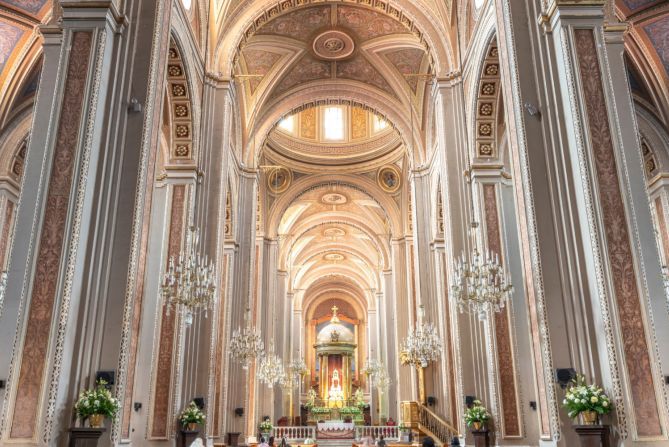 New technologies can both enable and enhance the contemplation of beauty in church architecture. / Credit: Shutterstock
New technologies can both enable and enhance the contemplation of beauty in church architecture. / Credit: Shutterstock
ACI Prensa Staff, Apr 14, 2024 / 07:00 am (CNA).
There are many beautiful churches in the world that combine impressive construction with splendid works of art. While some are on the more austere side, others contain so many details that it’s a challenge for the human eye to take it all in.
However, new technologies today allow us to contemplate from different angles, inside and outside, these stellar churches dedicated to the worship of God.
Below are seven videos that in addition to giving you extraordinary views will enhance the way you see these churches.
According to the Lourdes Shrine website, the complex covers over 130 acres and includes 22 places of worship, including three basilicas. The first is a chapel that has the title of Basilica of the Immaculate Conception, built over the grotto where Our Lady of Lourdes appeared in 1858.
The second is the Basilica of Our Lady of the Rosary, where you can see mosaics depicting the mysteries of the rosary. Finally, there is the underground basilica in honor of St. Pius X, which was inaugurated in 1958 on the occasion of the centennial of the apparitions.
Located in Barcelona, Spain, construction began in 1882 and was designed by architect Antonio Gaudí. Still not totally completed, construction continues to this day, financed by donations only. The Sagrada Familia (Holy Family) basilica website announced on its construction timeline that in November 2023 “the group of four towers of the evangelists was inaugurated.”
In 2026, the central tower of Jesus is scheduled to be completed. The interior beauty and attention to detail of the artistic representations of the exterior of the basilica were designed to lift up the spirits of visitors.
This church is dedicated to the Mother of God and is located on Tepeyac Hill in Mexico City, where the Virgin appeared to St. Juan Diego in 1531.
The current structure, completed in 1976, has a circular design so that the miraculous image of Our Lady of Guadalupe can be seen from any point in the church. Each year, tens of millions of people visit the site. Pilgrimages spike around the annual feast day on Dec. 12.
In Spain and throughout Europe, the Camino de Santiago (Way of St. James) pilgrimage route is well known. It ends at the cathedral of the same name. The cathedral’s website chronicles that it was built over the tomb of St. James the Apostle.
Since the ninth century when construction began, the church has undergone various changes, remodeling, and restorations. Visitors marvel at its striking baroque façade and its impressive details. The cathedral has been visited by both St. John Paul II and Pope Benedict XVI.
The cathedral and basilica located in the Diocese of Mar del Plata in Argentina was declared a National Historical Heritage Site in 1995. The church has neo-Gothic architecture and its interior has great artistic and religious value.
Construction began in February 1893 and the church was dedicated Feb. 12, 1905. The colossal church can seat 7,000 people. In January 2022, a 360-degree virtual tour of the structure’s three levels was released.
Located in Lyon, France, the church was built between 1872 and 1917 on a hill and can be seen from any point in the city. It has four main towers and a bell tower crowned with a golden statue of the Virgin Mary.
The basilica is situated in the oldest section of Lyon, which is a UNESCO World Heritage Site. In this video, you can see the statue of the Mother of God from above, protecting her children as dusk falls.
The cathedral, located in Cologne, Germany, is considered one of the greatest masterpieces of Gothic art in medieval Europe. It was built over a fourth-century Roman temple. Construction began in 1248 and took more than 600 years to complete.
In 1996 it was designated as a UNESCO World Heritage Site. Among its historic vaults it houses precious reliquaries, liturgical items, manuscripts, robes, and insignia of archbishops and cathedral clerics that have been used over the centuries.
The statue of Christ the Redeemer in Río de Janeiro, Brazil, is one of the best-known images of our risen Lord in the entire world. A chapel is located within the statue’s massive pedestal.
Located at the top of Corcovado Hill and considered one of the seven wonders of the modern world, this statue symbolizes that Christ reigns and will always reign.
This story was first published by ACI Prensa, CNA’s Spanish-language news partner. It has been translated and adapted by CNA.
Posted on 04/14/2024 09:00 AM (CNA Daily News)
 Archbishop Mazen Mattuka with Father Pius Affas at the Monastery of St. Banham and Sarah in Iraq. / Source: Facebook page of the Monastery of St. Banham and Sarah
Archbishop Mazen Mattuka with Father Pius Affas at the Monastery of St. Banham and Sarah in Iraq. / Source: Facebook page of the Monastery of St. Banham and Sarah
Mosul, Iraq, Apr 14, 2024 / 06:00 am (CNA).
The plight of Mosul’s Christian community has largely gone unnoticed for two decades. Since the city fell under the control of ISIS (also referred to as ISIL) in 2014, it has been a staging ground for bombings of churches. Armed groups have killed, blackmailed, and abducted numerous Christians there — both clergy and laypeople — since 2003.
Syriac Catholic priest Chorbishop Mazen Mattuka — along with Father Pius Affas (who at the time was pastor of Mar Thoma Syriac Catholic Church in Mosul and is now retired) — endured a nine-day abduction ordeal in 2007.
In Mattuka’s first press interview since being appointed superior of the historic Monastery of St. Banham and Sarah in Qaraqosh near Mosul in October 2023, he opened up to ACI Mena, CNA’s Arabic-language news partner, about his kidnapping.
“I had just been ordained a priest on Sept. 1, 2007, when I was assigned to serve at the Syriac Catholic Church of St. Thomas on the eastern coast of Mosul,” Mattuka recounted. “On the 40th day of my priesthood, Oct. 13, armed men ambushed Father Affas and me as we were leaving a condolence visit, heading to the Church of Our Lady of Fatima for me to celebrate my first Mass on her feast day.”
Describing the initial moments after his abduction as “a true testimony,” Mattuka explained, “every consecrated individual in Mosul knew at that time that they were subject to abduction and martyrdom. As a priest, I was persuaded that my fate would be similar to that of the two martyrs of Mosul — Father Raghid Kenni (2007) and Father Alexander (2006).”
“Our clothes and manner of responding during the interrogation revealed our identities to the abductors,” he continued. “We thanked God because all they wanted was a ransom; they didn’t plan to kill us. We were blindfolded in our makeshift prison.”
Mattuka said the first night was the most difficult. “I spent it in prayer and supplication: ‘Oh Lord, I am in deep sorrow because I did not have the opportunity to serve you for long. However, I am ready for martyrdom.’”
Prayer was the priests’ daily sustenance, Mattuka said. “We felt the Holy Spirit’s presence. We were at peace during our prayers. This gave me the wisdom to converse with our captors. The Holy Spirit guided my responses to convince them.”
He said the abductors were astonished to see him pray, bowing to the ground. He told them: “This is how Eastern Christians pray. Our Churches pioneered this posture of prayer that we’ve maintained for centuries.” He explained that “under the threat of death, the demand to renounce our faith never ceased. Our captors were surprised that we still rang the bells and celebrated Mass.”
After their release, Mattuka and Affas found no more sincere expression of joy and gratitude than ringing those same bells and celebrating Mass to give thanks. Masses of thanksgiving were held in many churches.
“We celebrated the holy Eucharist at the Church of St. Paul with Bishop Boulos Faraj Rahho, who later was martyred,” Mattuka said.
Mattuka said he felt pride in participating in World Youth Day with Pope Francis in Portugal last August, finally fulfilling his vow to thank Our Lady of Fatima, who watched over him after he was abducted on her feast. Many at her shrine had prayed for his safe return, as they told him, and their prayers were answered.
Made a “Chorbishop” in December 2023 — a promotion given to a priest in Eastern Catholic Churches (though a lower rank than a bishop) — Mattuka spoke of his gratitude for serving in the church of his forefathers in Iraq. He said the words of believers never fail to warm his heart: “You seem more active and optimistic after the abduction. You give us hope by saying, ‘Do not grieve, for the joy of the Lord is your strength.’”
During his captivity, Mattuka said he lost the only vestment he owned since ordination. Nevertheless, he found himself reborn.
“God granted me a new life, allowing me to serve in his vineyard,” he said. “Therefore, I lived my priestly maxim to the fullest: ‘Fear not, for I am with you.’”
This story was first published by ACI Mena, CNA’s Arabic-language news partner. It has been translated and adapted by CNA.
Posted on 04/13/2024 17:41 PM (CNA Daily News)
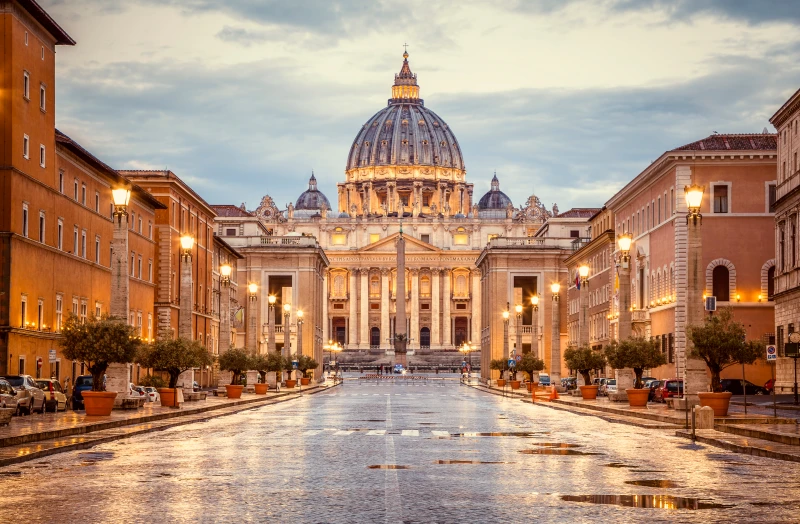 St. Peter's Basilica in Vatican City. / Shutterstock
St. Peter's Basilica in Vatican City. / Shutterstock
CNA Staff, Apr 13, 2024 / 14:41 pm (CNA).
The Holy See on Saturday confirmed that it had sent a diplomatic letter to the French embassy over a French court ruling involving a Canadian cardinal’s alleged wrongful dismissal of a nun.
A French court in Lorient, in Brittany, earlier this month had fined Canadian Cardinal Marc Ouellet, along with several other parties, for the October 2020 wrongful dismissal of Sabine Baudin de la Valette, whose religious name was Mother Marie Ferréol.
Baudin de la Valette, 57, had reportedly lived in the French monastery since 1987 without any significant incidents, but in 2011 she denounced “serious abuses and facts” happening in the community.
She was dismissed from the community after a visit from Ouellet. It was never made public what exactly the Vatican accused her of, though the former sister reportedly said the dismissal decree “accused her of having an evil spirit but gave no concrete reasons.”
On Saturday, meanwhile, Vatican News reported that Director of the Holy See Press Office Matteo Bruni confirmed to reporters the Vatican Secretariat of State’s transmission of a “Note Verbal,” or a diplomatic message, to the Embassy of France to the Holy See.
The letter addressed the “alleged decision of the Tribunal of Lorient in France in a civil dispute concerning the dismissal from a religious Institute of Ms. Sabine de la Valette (formerly Sister Marie Ferréol),” Bruni told reporters.
“A potential ruling from the Lorient Tribunal,” Bruni told journalists, “could raise not only significant issues concerning immunity, but if it ruled on internal discipline and membership in a religious institute, it might have constituted a serious violation of the fundamental rights to religious freedom and freedom of association of Catholic faithful.”
Ouellet, who previously served as prefect of the Dicastery for Bishops, “never received any summons from the Lorient Tribunal,” Bruni said.
The Vatican learned of the tribunal’s decision “only from the press,” Bruni said on Saturday.
The court also accused the religious community, among other things, of not correctly following the dismissal procedure. There was no prior warning and no reason for the dismissal from the community.
In addition, the court said, the community breached its duty of care when dismissing Baudin de la Valette, who was not offered any financial compensation that would have enabled her to “enjoy appropriate civil living conditions after 34 years of religious life and service to her community in the spirit of justice and charity as set out in canon law.”